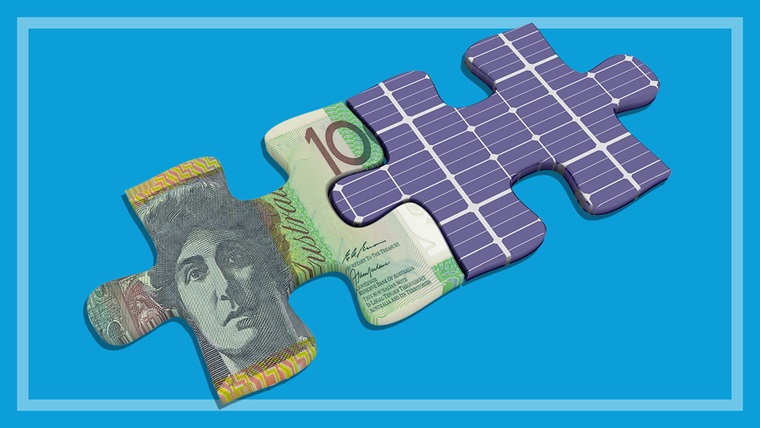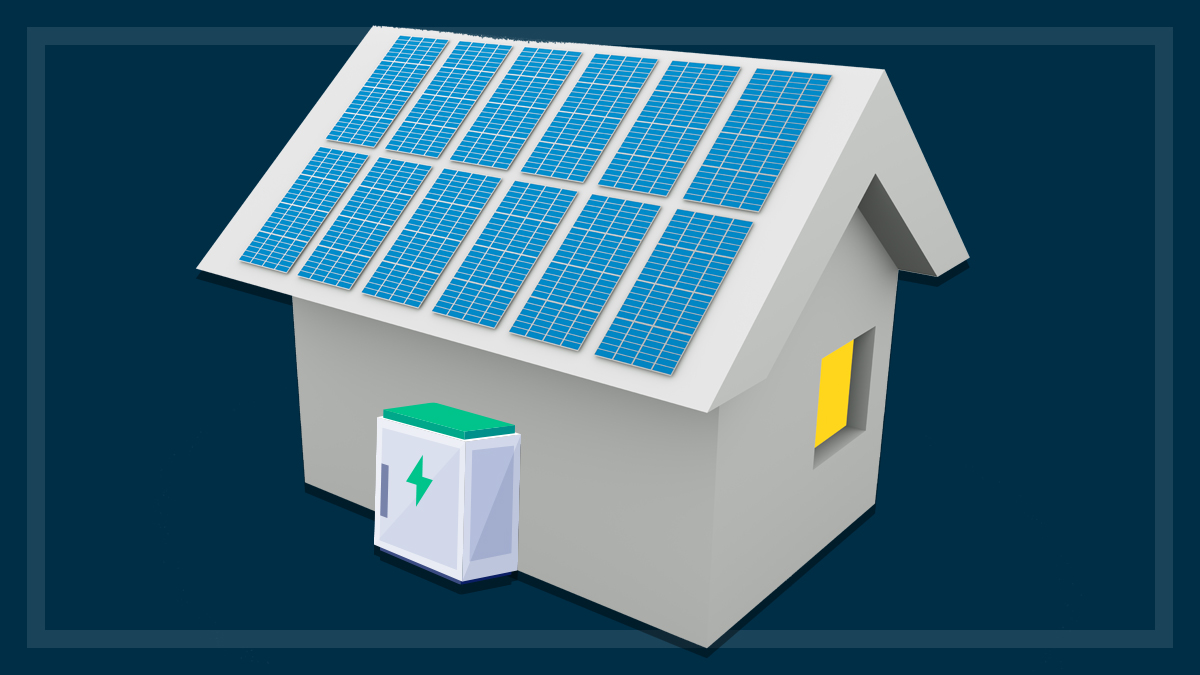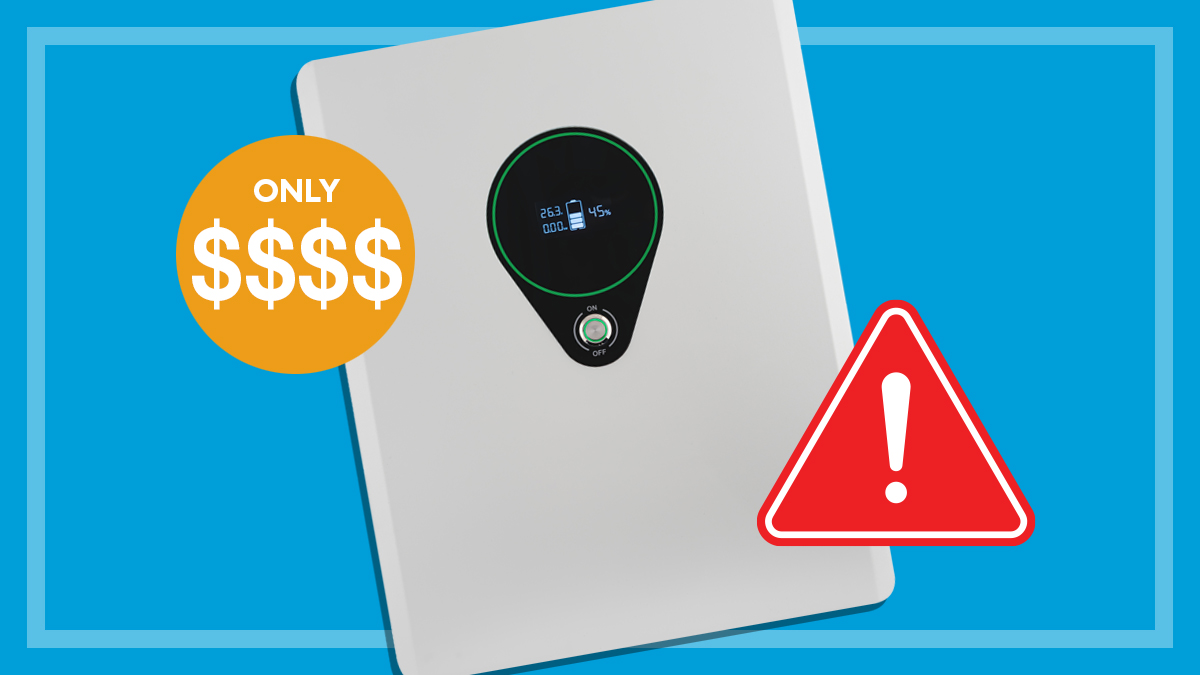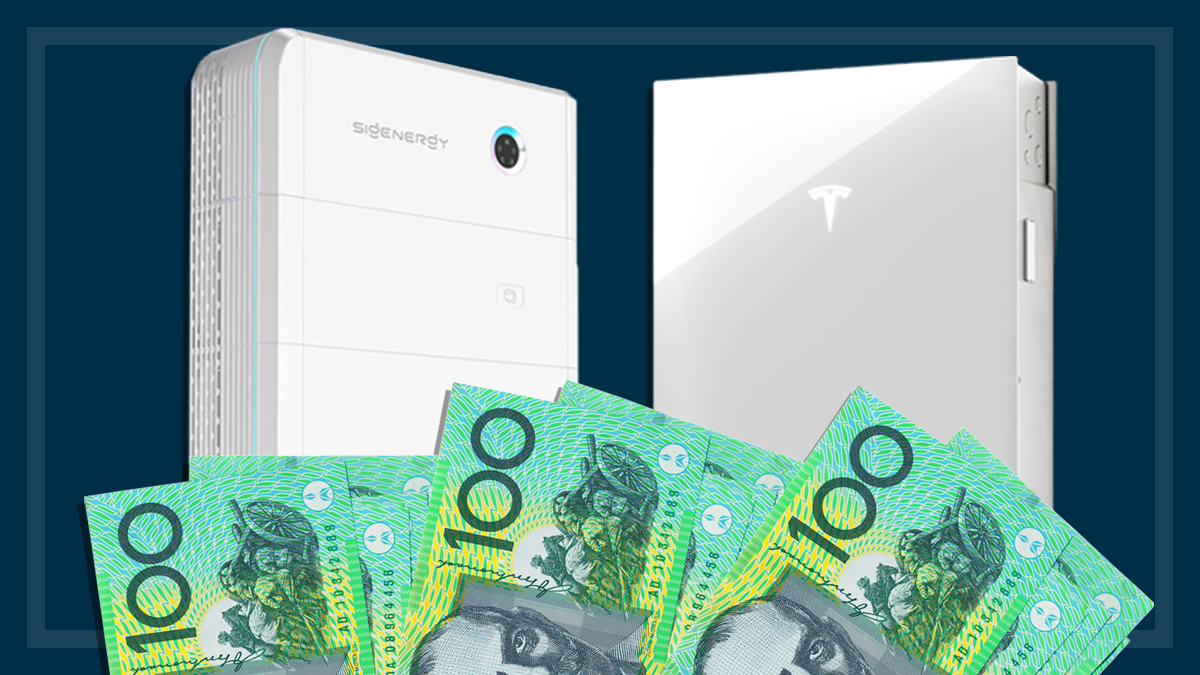Get our independent lab tests, expert reviews and honest advice.
Rising cost of electricity will improve solar payback times
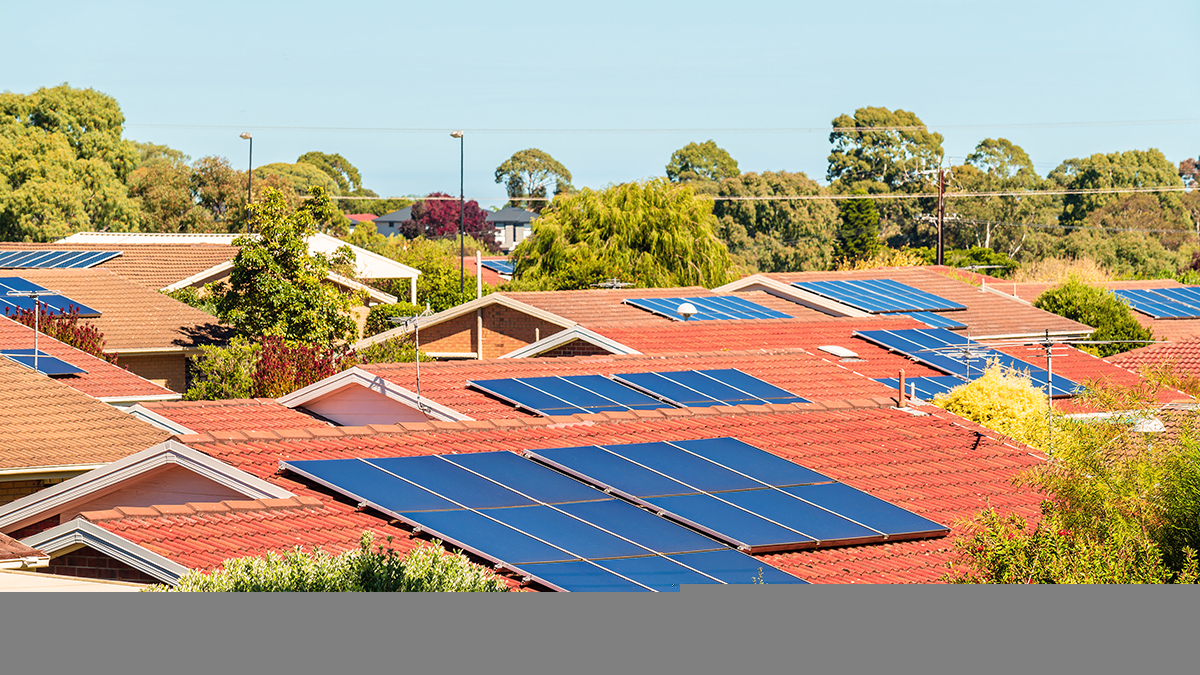
Need to know
- Electricity prices are set to increase across the country from 1 July after regulators set new pricing
- This means a solar installation on your home could pay for itself more quickly than before, leading to greater savings
- You can find reliable solar quotes and estimates through CHOICE and our partners
The decision by energy regulators to lift benchmark electricity prices in the second half of this year is yet another blow to households struggling with the increasing cost of living.
But for those who’ve been considering installing a solar system to offset their power bills, there’s never been a better time to take the plunge.
CHOICE has found many Australian households can now expect a solar installation to pay for itself more quickly, with payback times as short as around four or five years.
Electricity prices are going up: By how much and why?
In May, the Australian Energy Regulator (AER) announced the cost of residential electricity in NSW, South Australia and South-East Queensland could increase by up to 25% during 2023–24.
This is because the AER decided to lift its default market offer (DMO), which is the maximum price retailers can charge customers.
Victoria’s regulator quickly followed suit, saying households there could also expect a 25% lift, after it adjusted its Victorian Default Offer (VDO) for the same period.
Many regulators have explained the hikes are due to volatility in the wholesale sector over the past year
In other parts of Australia, electricity markets are directly regulated, meaning the prices paid by most households are set by the state or territory government.
Authorities in these markets have also announced that prices will rise, with average increases of up to 28.7% in regional Queensland, 9.15% in Tasmania, 4.15% in the ACT, 2.5% in south-west WA and 2.7% in the Northern Territory.
Many regulators have explained the hikes are due to volatility in the wholesale sector over the past year, some of which has been caused by the closure of power stations in major markets and the unreliability of certain coal-fired assets.
Solar costs have undergone a historical decline
Meanwhile, the cost of home solar has decreased dramatically over the past 10 years, mostly due to solar panel manufacturers in Asia expanding their operations and becoming more efficient.
Although the cost of a 6.6kW installation of panels – a popular starting size for Australians installing solar – has increased slightly in recent years, it’s still lower than it was a decade ago.
Consumers going solar today are getting increasingly better value for money
CHOICE solar expert Chris Barnes says that in any case, consumers going solar today are getting increasingly better value for money.
“What you get for your dollar is generally superior to what you’d have bought a few years ago,” he says. “Solar panel capacities keep improving and we’ve seen warranty periods on solar panels and other components improve in recent years.”
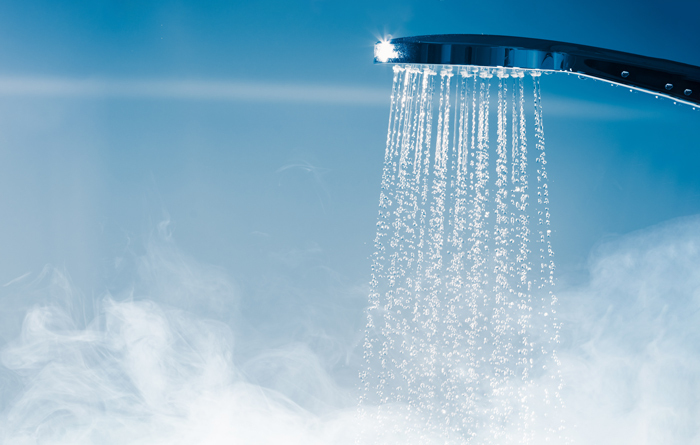
Higher electricity prices lead to quicker solar pay-off
The combination of the declining cost and improving performance of solar panel systems with the predicted rise in electricity prices is expected to deliver shorter solar payback periods for solar users.
“The solar payback period is how long it takes for your solar panel system to pay for itself from the savings on your reduced electricity bills,” Chris explains.
“For example, you could find that instead of paying hundreds of dollars per quarter, you’re now paying less than $100,” he says. “At this rate, the accumulated savings may cover the initial cost of the solar panel system within a few years.”
The solar payback period is how long it takes for your solar panel system to pay for itself from the savings on your reduced electricity bills
CHOICE solar expert Chris Barnes
Also factoring into the payback equation are the feed-in tariffs (FiTs) solar households are paid for the excess power they generate and sell back to the grid.
These have been decreasing in many parts of the country, and although this means consumers have fewer inputs to put towards paying off their solar installation, other factors such as the rising cost of electricity are proving more significant.
This means payback times are falling in a majority of cases, but falling FiTs and smaller price increases have delivered longer payback times in some rare instances.
CHOICE calculates new payback periods
We regularly crunch the numbers on the costs of solar and compares retail electricity contracts in order to estimate payback periods and yearly savings through our Solar Estimator tool, co-created with our partners at SolarQuotes.
Updating our calculations to factor in the increases in energy costs that have been greenlit by regulators, we’ve seen sizeable drops in payback periods in many parts of Australia.
We’ve found that payback periods in capital cities could drop by an average of 10%, and by up to 30% in some regional areas
We made these calculations based on a hypothetical scenario where a household of five people buys a 6.6kW system and self-generates 35% of their total energy consumption.
Because a solar battery is not included in this scenario, the home would use grid energy when there was no sunlight and export at other times when there was too much, earning money through the FiT.
Based on this sample scenario, we’ve found that payback periods in capital cities could drop by an average of 10%, and by up to 30% in some regional areas.
Solar payback times in major cities before and after July 2023
For a 5 person household installing a 6.6kW solar system
Darwin:
Before – 6 years
After – 5.7 years
Reduced by 4%
Cairns:
Before – 4.4 years
After – 3.1 years
Reduced by 30%
Brisbane:
Before – 4.7 years
After – 4.1 years
Reduced by 13%
Sydney:
Before – 4.5 years
After – 3.8 years
Reduced by 15%
ACT:
Before – 5.6 years
After – 5.4 years
Reduced by 3%
Melbourne:
Before – 5 years
After – 4.4 years
Reduced by 13%
Hobart:
Before – 5.5 years
After – 5.2 years
Reduced by 7%
Adelaide:
Before – 3.9 years
After – 3 years
Reduced by 23%
Perth:
Before – 4.5 years
After – 4.6 years
Increased by 1%
In Sydney, under the proposed increase in electricity prices, payback times could drop below four years, while climate differences in the ACT and Hobart mean pay-off times in these areas will also reduce, but less dramatically (to 5.4 and 5.2 years, respectively).
The NT has the longest payback period of any region we calculated at 5.7 years, which is due in part to the extra cost of installing solar in the territory.
The sooner you get panels on the roof, the sooner you start saving money
CHOICE solar expert Chris Barnes
In Perth, however, the predicted payback period has actually increased by around 1%, due to WA authorities locking in one of the lowest rises in electricity prices in the country, while also reducing the FiT paid to solar users who export power to the grid.
Chris says no matter where you live in Australia, solar will deliver household savings in the long run.
“The sooner you get panels on the roof, the sooner you start saving money,” he says. “It’s sometimes said that the best time to get solar was a year ago, and the next best time is now.”
‘Great insulation against energy prices’
CHOICE staffer Jen Paterson has already noticed savings after installing solar on her Sydney home in March this year, and says she believes the decision has already put her on a strong footing ahead of news of price increases.
“Our main motivation was environmental, but we’ve also seen our energy bill halve since we put it on,” she says.
Our main motivation was environmental, but we’ve seen our energy bill halve since we put it on
Jen Paterson, CHOICE staffer
“We’ve started using appliances more strategically during daylight hours, so I’d expect it to drop even lower in subsequent quarters, which is great insulation against energy price rises.”
Why we've partnered with SolarQuotes
We've partnered with SolarQuotes to help you find and buy the right solar, battery, heat pump and EV charger. While we make money if you use SolarQuotes to find an installer, this doesn't influence our ratings. 100% of the money we make goes directly back into our nonprofit mission.
Shonky solar operators capitalise on booming market
Chris says he’s concerned that promises of quicker savings and cleaner energy could lead to the solar industry being hijacked by “sharks looking to exploit consumers” as power bills rise.
“Unfortunately, solar technology is still a bit of a mystery to many people and it involves a lot of brands they won’t be familiar with,” he says.
“That opens up opportunities for shonky businesses to push bad deals and dodgy sales behaviour.”
Over the years, with solar increasing in popularity and becoming more accessible, CHOICE has seen many ads from dubious-looking businesses, especially on social media.
Chris advises consumers to steer clear of any deal that “seems too good to be true”, and to never sign up on the day with a door-to-door salesperson.
Don’t fall for classic traps such as ‘limited time offers’, and get the full specs of the solar system in writing before signing up
CHOICE solar expert Chris Barnes
“Don’t fall for classic traps such as ‘limited time offers’, and get the full specs of the solar system in writing before signing up, to avoid the provider substituting alternative brands at the last minute,” he adds.
As well as providing estimates on your solar payback period, CHOICE’s Solar Estimator connects you with our partners at SolarQuotes, who can provide quotes from qualified and pre-vetted solar installers.
Finally, if you’re thinking about getting solar, there are also various state, territory and federal government assistance programs and rebates that are usually included in quotes for installation.
For more information, read our guide to state and territory solar and appliance rebates and our page on federal solar rebates.


